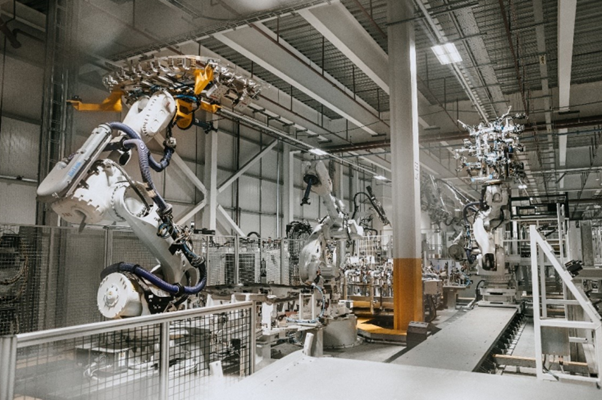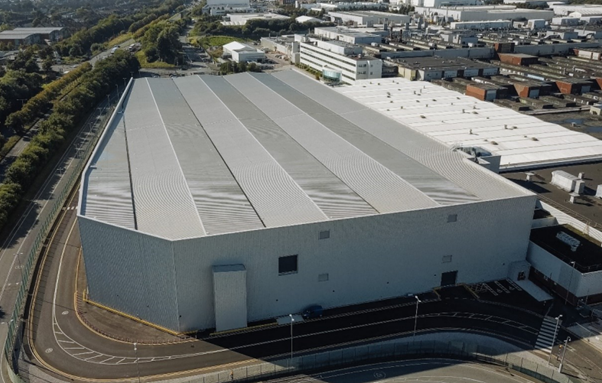Jaguar Land Rover (JLR) is transforming its factory in Halewood, Merseyside, in preparation for electric vehicle (EV) production with a £500 million investment.
Originally built in 1963 to produce the Ford Anglia, Halewood is being transformed for the electric era.
More than £250m has been invested in new production lines, machinery, people and digital technology, with a further £250m to be injected over the coming years.
Barbara Bergmeier, executive director for industrial operations at JLR, said: ‘’Halewood has been the heart and soul of JLR in the northwest of England for well over two decades, producing vehicles such as the Range Rover Evoque and Discovery Sport.”
The site has been extended by 32,364 sqm to produce JLR’s medium-sized electric luxury SUVs on the new electric modular architecture (EMA) platform.
The historic plant has been fitted with technology including new EV build lines, 750 autonomous robots, ADAS calibration rigs, laser alignment technology for perfect part fitment and the latest cloud based digital plant management systems to oversee production, creating the “factory of the future”.
Bergmeier continued: “Halewood will be our first all-electric production facility, and it is a testament to the brilliant efforts by our teams and suppliers who have worked together to equip the plant with the technology needed to deliver our world class luxury electric vehicles.’’
The investment is part of JLR’s commitment to its Reimagine strategy, which will see JLR electrify all its brands by 2030, with the aim of achieving carbon net zero across our supply chain, products, and operations by 2039.
Electrification is central to this strategy and JLR says that Halewood has an exciting future producing internal combustion engine (ICE), plug-in hybrid electric vehicle (PHEV) and battery electric vehicle (BEV) models side by side before eventually becoming JLR’s first all-electric production facility.
There is a new body shop capable of producing 500 vehicle bodies per day and the paint shop has been modified with the expansion of ovens and conveyors to respond to increased demand for contrasting roofs.
The final production line has also been increased in length from 4km to 6km to accommodate battery fitment and 40 new, autonomous mobile robots (AMRs) have been introduced to assist employees with the fitment of high-voltage batteries.

Furthermore, JLR has delivered high voltage training to more than 1,600 employees, while £16 million worth of equipment from JLR’s Castle Bromwich site, ranging from ABB robots to automated guided vehicles, has been integrated for reuse at the new facility.
As JLR looks to introduce advanced AI-powered autonomous driving and connected services into its next generation vehicles, Halewood’s facility now features new Advanced Driver Assistance System (ADAS) calibration rigs, capable of measuring ADAS responsiveness to ensure each vehicle leaves with the safest level of calibration for future autonomous driving.
With the new production lines having completed the first test builds of EMA body shells, JLR will continue to test and optimise the new machinery and technology ahead of EMA production commencing.






















@Caravan1 - 26/09/2024 13:46
Perhaps they will make some cars that actually work.